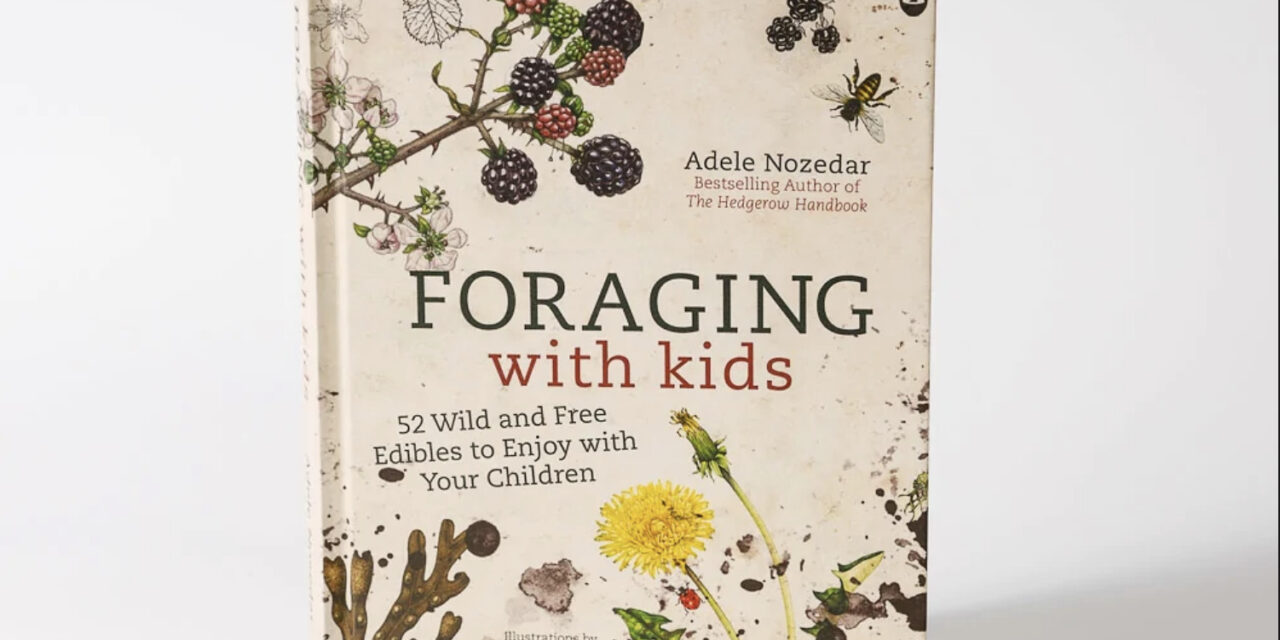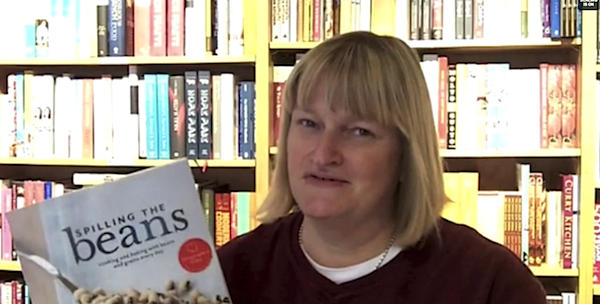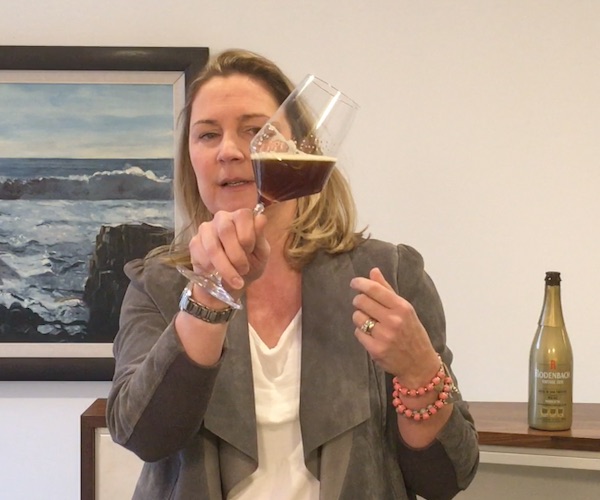FORAGING with kids: 52 Wild and Free Edibles to Enjoy with Your Children – Adele Nozedar (Nourish Books) $18.95
A few months back I reviewed the absolutely excellent Forager Chef’s Book Of Flora by Alan Bergo, and promised back then that I’d finally get around to reviewing a companion guide, of sorts, Adele Nozedar’s FORAGING with kids.
Our child has been an enthusiastic forager predating our move to rural Ontario, always fascinated by what we could harvest from hedgerows (not that we really have them here in Canada, but you know what I mean) and the like, but with an innate sense of having to be extremely mindful of what was safe and what was perhaps unsafe; after two and a half years of country life, he simply loves to point out the wild edibles around to anyone who will listen. All of this terrifies my Scottish mother, who is constantly kept awake worrying about her wee grandson poisoning himself as his father did last year.
Although the book is written from a UK perspective, it has been cleverly put together to be widely accessible to as many as possible, and for the most part almost everything within is applicable to what can be found within Canada’s borders.
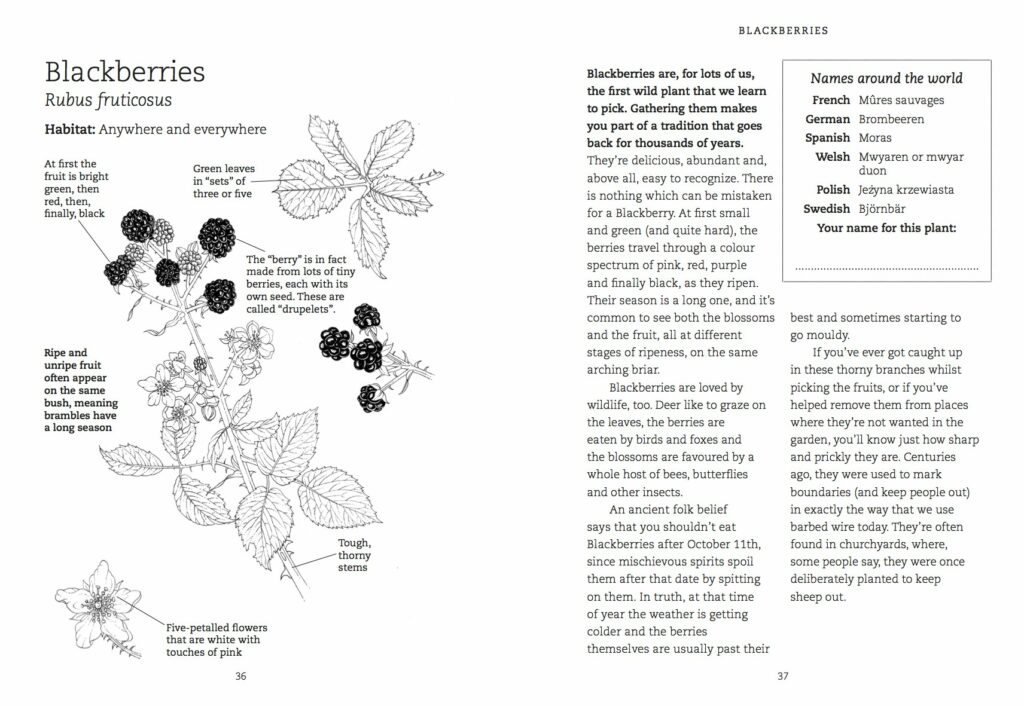
At first reading I was a little disappointed that this book contained no photographs to aid with identification, but as I burrowed deeper I came to understand that there was method in this decision; if one looks at this book as a highly detailed children’s activity book centred around edible plants, berries, and fungi, it makes perfect sense. Best to leave the initial positive identification to the adults, methinks.
Ever since an early visit to London’s Kew Gardens, I’ve been fascinated by botanical illustrations, and artist Liz Harper’s drawings here pressed all the right buttons for me. The author even suggests that children colour in these hand-drawn illustrations. It’s with little interactive details like this that the book is at its best, with the spaces left for the child’s (or family’s) names for the 52 edibles it covers being a truly wonderful touch.
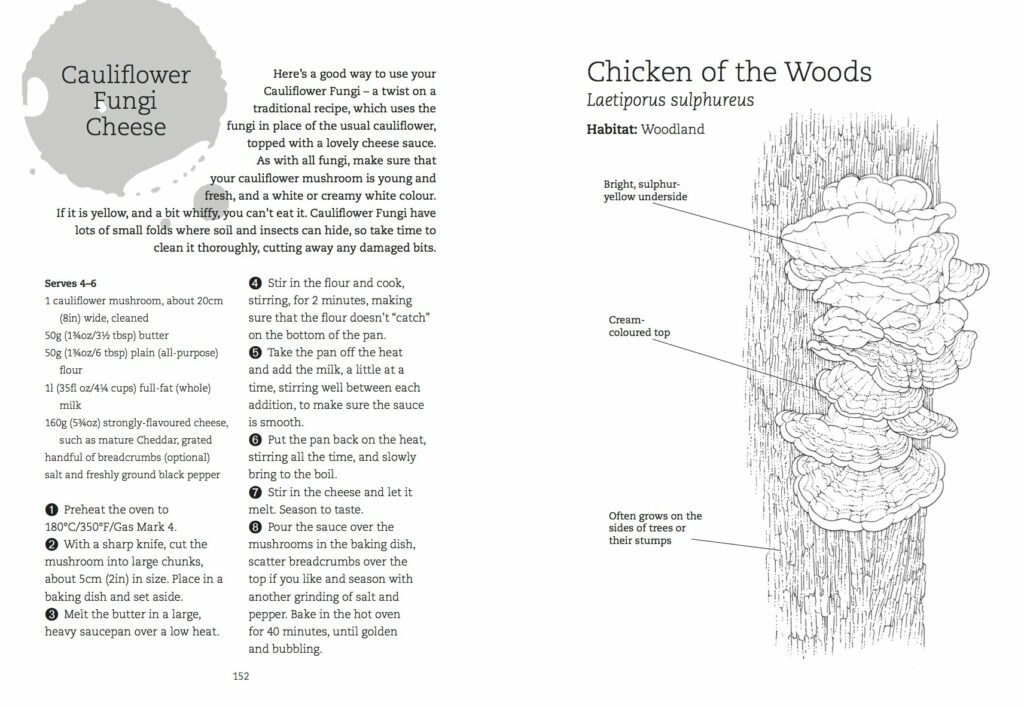
Each wild edible is followed by a number of serving suggestions and/or recipes, all with extremely easy to follow instructions, although most will require an adult’s assistance, particularly for smaller kids; but anyone with even a smattering of common sense will surely work this out for themselves.
Even for a reasonably experienced forager there are some surprises here. I had no idea that one could safely eat both the leaves and the blossoms of the Linden tree… and the final chapter on coastal plants (Bladderwrack, Laver, Dulce, Rock Samphire, and Sea Beet/Spinach) was almost all new to me. Now I find myself longing for a long coastal walk with some beach foraging along the way.
This is a really delightful book to share with your children, although I’d suggest a more adult-oriented identification book as a prerequisite for yourself, just to be on the safe side, however, for what it is, it’s undoubtedly a five apple book.
![]()
(Five out of a possible five apples)

